Highlights and access methods of Nara Hasedera Temple (Nara Prefecture)
English | Japanese
Hasedera Temple is located halfway up the hill of Mount Hatsuseyama in Sakurai City, Nara Prefecture. Known for the seasonal flowers such as peonies in spring, hydrangeas during the rainy season, and autumn leaves in the fall, it attracts many tourists. There is a staircase called Noborirou with 399 steps, and at the top, you can find a national treasure, the Main Hall. From the stage of the Main Hall, you can enjoy a breathtaking view.
In this article, we will explain the attractions of Nara Hasedera Temple in Nara Prefecture and how to access it for those who are traveling to Japan from overseas.

(Last modified: )
(Prefecture : Nara , Category : Temples)
Table of contents
Highlights of Nara Hasedera Temple
Hasedera Temple is the head temple of the Shingon sect, Buzan-ha, located in Sakurai City, Nara Prefecture. Situated halfway up the mountain of Hatsuseyama, it is known and loved as "The Flower Temple" due to the ability to enjoy a variety of flowers changing with each season, including cherry blossoms, peonies, hydrangeas, and autumn leaves.
When you pass through the Niomon gate of Hasedera Temple, you will find a roofed staircase called the "Noboriro." This staircase, consisting of 399 steps in total, is divided into three sections: the Lower, Middle, and Upper Noboriro. In the spring, you can enjoy the peony flowers blooming along the stairs, and during the rainy season, a multitude of potted hydrangeas adorn the "Arashi no Saka" at the end of the Lower Noboriro, creating a beautiful sight.
At the top of the Noboriro, you will find the main hall, a national treasure. The main hall is built on a cliff using the same architectural method as the Kiyomizu Temple in Kyoto, with a stage projecting from the front. From this stage, you can have a panoramic view of places like Atago Mountain, making it a recommended spot you should definitely visit.
The temple's main deity is the Eleven-Faced Kannon Bodhisattva, standing about 10 meters tall, making it one of the largest wooden Buddha statues in Japan. It has been reconstructed several times due to fires, and the current statue was built during the Muromachi period. Normally, you can view the statue from outside, but during special viewing periods, you can enter the main hall and directly touch and worship it.
Hasedera Temple has been visited by many cultural figures since ancient times. A poem by Ki no Tsurayuki featured in the "One Hundred Poets, One Poem Each" is themed on the plum of Hasedera Temple. Also, Hasedera Temple appears frequently in classical literature such as The Tale of Genji and Sarashina Nikki. The "Two Cedars" mentioned in the "Tamakazura" chapter of The Tale of Genji can still be seen at Hasedera Temple today. If you're interested, please refer to the temple's map and take a detour to visit.
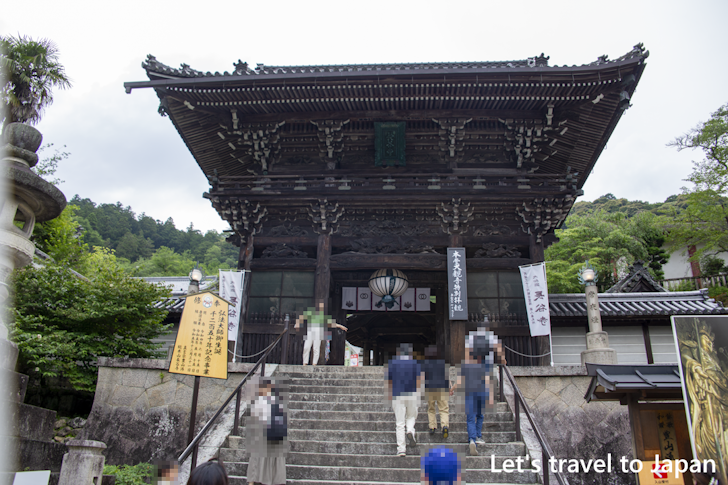
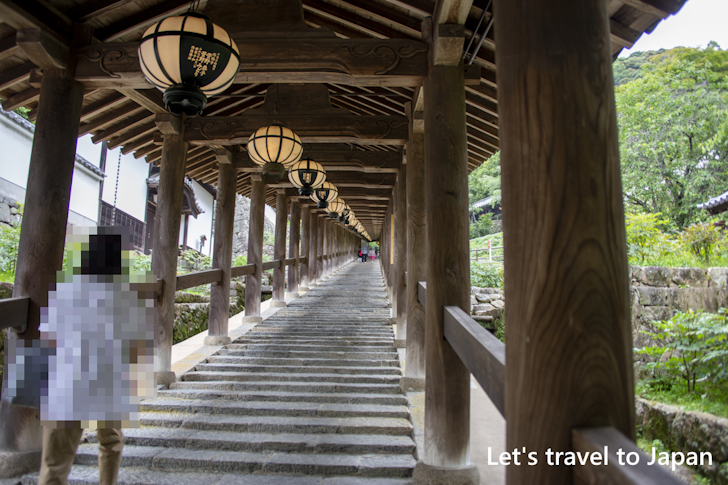
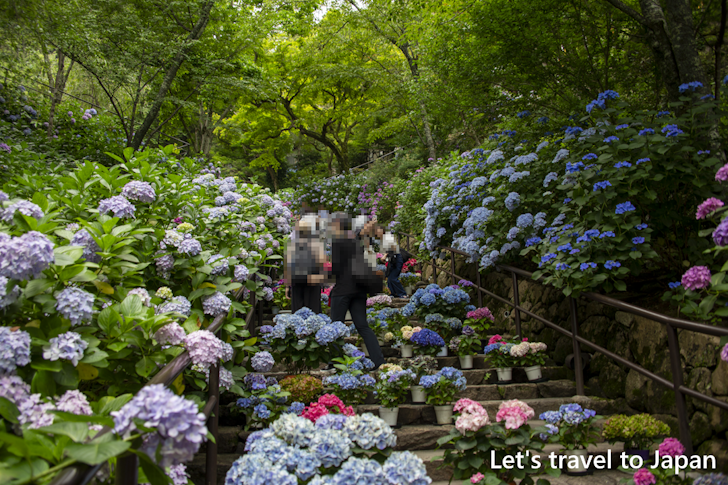
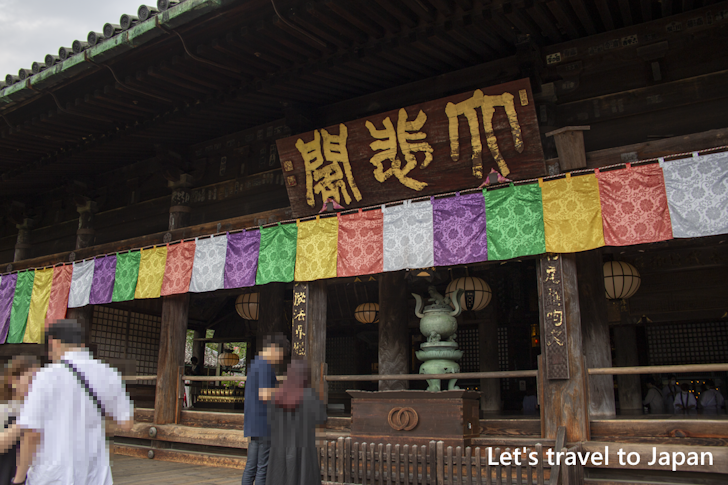
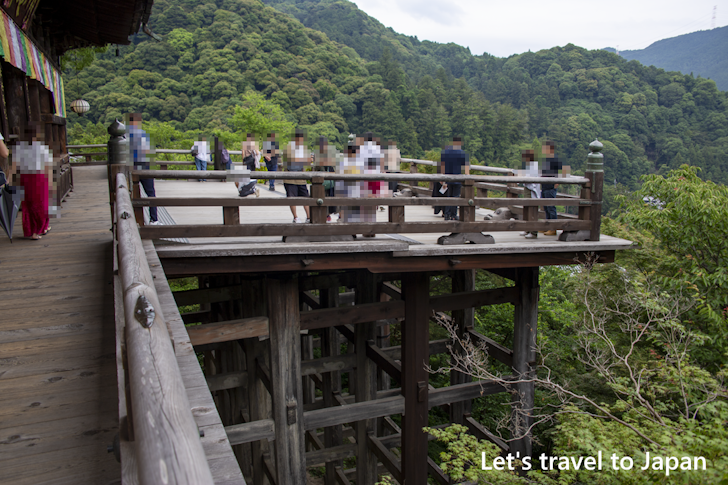
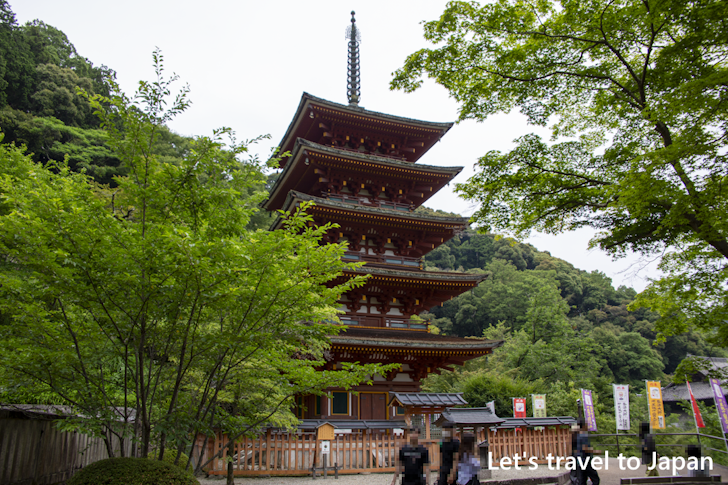
Address and access method of Nara Hasedera Temple
The address of Nara Hasedera is "731-1 Hatsuse, Sakurai City, Nara Prefecture". The nearest station is Hasedera Station on the Kintetsu Osaka Line. It's about a 15 minute walk from the station. Or JR Manyo Mahoroba Line Sakurai Station. From the station, transfer to the Nara Kotsu Bus and get off at Hasedera Sandoguchi. It's about a 10 minute walk from the stop.
Attractions near Nara Hasedera Temple
Several notable attractions are located near Nara Hasedera Temple:
Kasuga Taisha Shrine
A few minutes by car from Hase-dera Temple, you'll find Kasuga Taisha Shrine. This UNESCO World Heritage Site is known for its numerous stone and bronze lanterns. Every year, the Lantern Festivals in February and August offer a mesmerizing sight when these lanterns are lit.
Nara Park
Located about a 10-minute drive from Hase-dera Temple, Nara Park is famous for its 1,200 free-roaming Sika deer, considered sacred messengers of the gods. The park also houses several historical sites, including Todai-ji Temple and Kofuku-ji Temple.
Todai-ji Temple
Approximately a 10-minute drive from Hase-dera Temple, Todai-ji Temple is a historic site well-known for its Great Buddha Hall, the world's largest wooden structure. The hall houses one of the largest bronze statues of the Buddha, standing at over 15 meters tall.
Isuien Garden
Situated a 15-minute drive from Hase-dera Temple, Isuien Garden is a beautiful Japanese garden dating back to the Meiji era. The garden features two parts: a front garden and a rear garden, each boasting beautiful landscape designs and views of the surrounding Nara cityscape.
Other information about Nara Hasedera Temple
Official site about Nara Hasedera Temple :
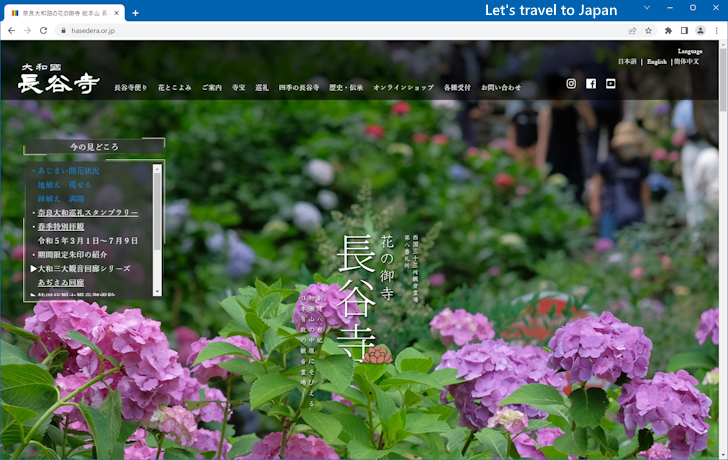
-- --
Thank you for reading to the end.
( Written by Tatsuo Ikura )